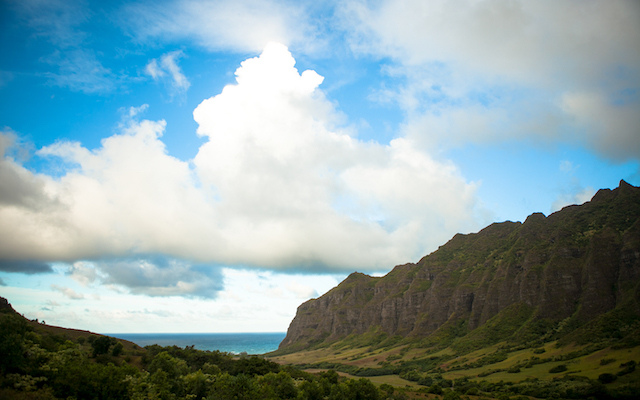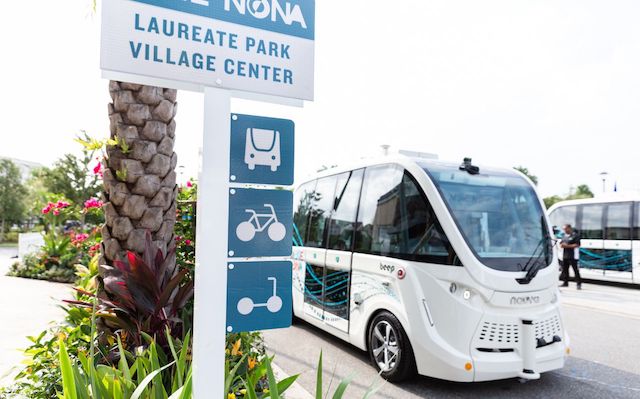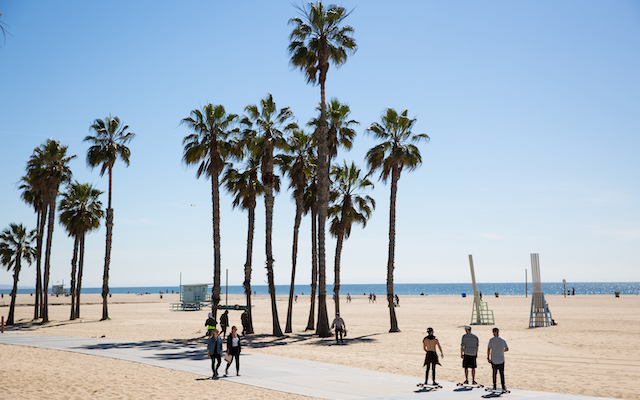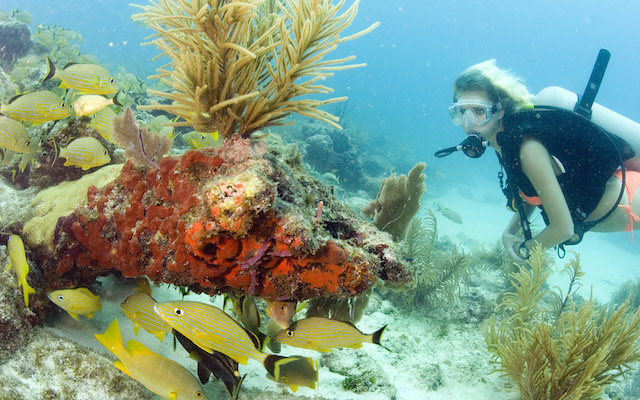
Want to be a more eco-friendly traveller to the USA, the next time you return to the USA? You can reduce the impact of your trip to the USA by picking a destination that's focussed on promoting tourism in a more responsible way. Here's our pick of some of the best sustainable travel destinations in the USA.
Sedona, Arizona
The beautiful city of Sedona, surrounded by 1.8 million acres of national forest land, in Arizona, is at the forefront of sustainable tourism in the USA. Sedona encourages tourists to become a ‘temporary local’, and take the
Sedona Cares Visitor Pledge, which offers a list of easy ways in which visitors can have a sustainable stay. Visit and you can enjoy a guilt-free experience as you explore its buzzing town, stunning rugged red-rock landscapes, forests, spas and vineyards. Sedona is even a place of healing and spiritual renewal; regarded by Native Americans as sacred, it’s home to a series of vortex energy centres.
The city has an ambitious
sustainable tourism plan to create brilliant experiences for visitors that also benefits the local community and environment. The town has taken measures to reduce traffic, overcrowding and noise at the city’s most popular spots, has water refilling stations throughout, and has a highly developed public transport system so tourists can ditch their cars. The tourism department has taken steps to make Sedona appealing to visit throughout the year, and its
Sedona Secret 7 program invites visitors to discover seven of the area’s hidden gems, creating a more even distribution of visitors.
 Hawai’i
Hawai’i
With such spectacular landscapes, archipelago's sacred lands, oceans and wildlife, it’s no wonder that Hawai’i is so dedicated to encouraging visitors to explore in a responsible way. Hawai’i's new sustainable tourism campaign asks visitors to make a 'pono pledge' during their visit. The
Share the Aloha website teaches visitors to explore the islands respectfully, encourages visitors to explore in a way that positively impacts the places they visit so that local communities’ benefit, nature thrives, and culture is respected and preserved for future generations. Travellers are encouraged to eat locally, be sensitive to marine life and corals when diving, not stray off trails and more. The US state of Hawai’i is the first state in the US set to ban the sale of sunscreen containing coral-harming chemicals by the end of 2020 and you can buy reef-safe sunscreen locally.
 Orlando, Florida
Orlando, Florida
The most popular destination for visitors in the USA, Orlando, in the state of Florida welcomes 75 million visitors every year, including more than 1 million UK travellers. The city is committed to hosting them - and you - in a responsible way in its theme parks, convention centre, restaurants, autonomous electric shuttle buses and hotels that 're-adapt' vacant iconic buildings - and the new mayor of Orlando/Orange County recently created the role of Chief Sustainability Officer for the region. Theme parks are reducing their footprint, for a start.
Disney built a Mickey-shaped solar farm that powers two of its theme parks, and since 2017 it has reduced its emissions by nearly 50%. Meanwhile, Universal Orlando Resort now uses alternative fuels in 100% of its service vehicles, resulting in 260 fewer tons of carbon dioxide emission. Travelling for work? The Orange County Convention Center is the world’s largest LEED Gold-Certified convention facility. (LEED is the most widely used green building rating system in the world).
 Santa Monica, California
Santa Monica, California
Los Angeles’ glamorous coastal city of Santa Monica, California, wants travellers to able to be eco-friendly without sacrificing luxury. It was the first US city to ban single-use plastics, at the start of 2019, and it’s now committed to achieving zero waste by 2030, through diversion, composting, and recycling.
Santa Monica was also the first city to sign up to the Cool Foods Campaign, which educates the public about how their food choices can affect global warming.
It’s easy to travel car-free here, by foot, bike or public transport, and stay in a sustainable hotel. The Shore Hotel, for example, a LEED Gold certified property next to the Santa Monica Pier, is designed to reduce consumption of natural resources. It uses locally sourced recycled materials (many salvaged from the building's preexisting site), most of its roof is covered in solar-reflecting material to reduce heat, and the swimming pool is heated by solar energy. Even its iconic 13-story Pacific Wheel was the World’s First Solar-powered Ferris Wheel.
 Florida Keys, Florida
Florida Keys, Florida
The subtropical island chain of the Florida Keys is home to the continental USA’s only living coral barrier reef. Much of the 2,900 square nautical miles of waters and submerged lands surrounding the Keys are protected by the Florida Keys National Marine - which celebrates its 30th anniversary this year.
To encourage visitors to experience this stunning natural environment in a sustainable way,
Florida Keys & Key West tourism council has launched a new ‘Connect & Protect’ awareness campaign. Visitors are invited to visit wildlife rescue centres including the
The Florida Keys Wild Bird Center in Key Largo or the world-famous Turtle Hospital in Marathon, and pick Blue Star diving, snorkelling or fishing trip operators, endorsed by the The Florida Keys National Marine Sanctuary. Keen divers can take part in programmes to help restore the Florida Keys reef at the The Coral Restoration Foundation in Key Largo. There are easy ways to be eco on the Keys, by using reef-friendly sunscreen and non-motorised transport, and even by eating lionfish - an invasive, predatory species that needs to be eradicated from local waters.
The Florida Keys Sanctuary has just announced that it's aiming to raise about $100 million to restore seven iconic coral reef sites off the Florida Keys, about the size of 52 football fields. The goal is to restore diversity and ecological function to the reefs by returning coral cover at target reef sites to a self-sustaining level.
%20Social%20copy.jpeg) Colorado
Colorado
The Colorado Tourism Office encourages visitors to care for the environment with a new partnership with the Leave No Trace Center for Outdoor Ethics. Through outdoor adventures, ranch holidays and eating out, visitors can help the environment on a sustainable Colorado stay in a range of ways. While planning your eco-friendly holiday here, take your pick from Colorado's 11 national parks and monuments, 58 mountain peaks and dozens of beautiful lakes, 39,000 marked trails and 13,000 designated campsites.
Try Pinon Flats Campsite, for example, in the
Great Sand Dunes National Park, where you’ll enjoy views of the USA's largest sand dunes as you unzip your tent in the morning. The site is nearby the 4.5-mile Dunes Trail loop and Medano Creek, a beautiful stream with a mountainous backdrop. Take a ranch holiday to volunteer, or just to get an insight into local conservation efforts - to protect both the land and herds - as well as their advanced sustainability practices. At
Badger Creek Ranch you can join cattle drives, help ranchers check fences and practice regenerative agriculture, a farming technique that increases biodiversity, enriches soil, improves watershed and enhances the natural eco-system. If you stay at
Zapata Ranch, one of the largest conservation projects in North America, you can work to protect the environment and bison living on the 50,000 acres of land. Guests here can experience life on a cattle ranch, working alongside the ranch staff and wranglers, all whilst not emitting any carbon footprint. Sounds like hard work? Pick your restaurant and you can do your bit - from local pioneering of the farm-to-fork movement to restaurants leading the way in eco-friendly practices, Colorado's food scene is increasing its sustainable efforts. In Denver,
Fruition and
Mercantile restaurants, are run by award-winning Colorado chef, Alex Seidel, who has led the farm-to-table revolution across the state for the past decade. Produce comes from the restaurants' own farm, where you can attend Fruition Farm's cheese or butchery classes.
Baltimore, Capital Region
The vibrant coastal city of Baltimore is taking steps to become more sustainable - with a raft of new initiatives designed by Visit Baltimore, the Maryland Office of Tourism Development, the Baltimore Convention Center (BCC) and hospitality businesses to provide greener experiences. From the BCC to the Maryland Green Travel program, a number of initiatives are in place to help offset our carbon footprint and foster green meetings.
The National Aquarium, which is home to North America's first dolphin sanctuary, has it has removed all single-use plastic foodware from their operations. Its Aquarium Conservation Team (ACT) has removed more than 1 million pieces of plastic debris (weighing about 80 tons) from critical habitats throughout the waters of Chesapeake Bay.